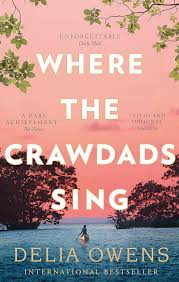41. A Small Herd
byA Small Herd, set in Chapter 41 in 1969, presents a deeply emotional chapter where Kya grapples with the aftermath of a traumatic confrontation with Chase. After escaping from him in her boat, Kya reaches the relative safety of her lagoon and shack. However, her emotional and physical pain intensifies as she reflects on the disturbing promise Chase made—his attempt to possess her, a threat that is as psychological as it is physical. Overcome by a sense of dread, Kya is unable to reach out for help, fearing that the society around her, already alienated by her isolated existence, would not believe her. The respect and status that Chase holds in the town—compared to her reputation as the “Marsh Girl”—means she has no chance of receiving fair treatment. With nowhere to turn and the haunting thought of Chase’s obsession constantly looming over her, Kya makes the decision to seek refuge in a secluded cabin that once stood as an abandoned log structure but has since been refurbished by Tate and Scupper. While this cabin offers little more than basic shelter, it provides Kya with a fleeting sense of safety, far removed from the threats and judgment of the outside world.
The weight of the shell necklace, still worn by Chase, casts a long shadow over Kya’s thoughts. Initially a symbol of their connection, the necklace has now become a painful reminder of Chase’s delusional claim over her. Each time Kya thinks about the necklace, she feels the invisible chains that bind her to him, a constant reminder that, despite her attempt to distance herself, he continues to hold sway over her life. The idea of being permanently marked by Chase, both physically and emotionally, fills Kya with dread and a desire for autonomy, but she knows that in her current position, achieving that autonomy seems impossible. The narrative reflects Kya’s struggle against both external forces—the threat of violence from Chase and the societal judgment she faces—and her internal battle with the fear that she will never be truly free. As she journeys toward the cabin, the terrain mirrors the turmoil inside her—a vast, untamed landscape that symbolizes her resilience yet also underscores the profound loneliness she feels in her fight for independence. The wind-swept journey to the cabin is not just physical, but deeply symbolic of Kya’s emotional isolation and her attempts to protect herself from the forces that threaten her peace of mind and body.
When Kya reaches the cabin, the small improvements made by Tate and Scupper bring her brief comfort. Though the cabin’s bare necessities provide shelter, it is the isolation that heightens Kya’s sense of confinement. The fear of Chase’s pursuit hangs over her like a dark cloud, making the cabin feel less like a sanctuary and more like a prison. As she sits quietly by the creek, observing the small ripples in the water, Kya reflects on the solitude that has defined much of her life. In this brief moment of peace, Kya looks up to see a small herd of deer in the distance, gracefully moving through the landscape. Their presence stands in sharp contrast to her isolation—here is a group, a community, living in harmony, an image of togetherness that Kya has long yearned for. The deer, unaware of her gaze, embody the sense of belonging and connection that Kya desires but feels disconnected from. Their peaceful existence, in the midst of nature’s beauty, is a reminder of the world she used to be a part of—a world now painfully out of reach. This moment of observing the deer stirs a longing within Kya, a deep desire for companionship and connection, but she remains painfully aware of the emotional walls that separate her from others, and the alienation that she constantly battles.
The chapter poignantly explores the inner conflict that defines Kya’s emotional landscape. The external elements of isolation, represented by the cabin and the wind-swept terrain, mirror the internal struggles Kya faces as she contemplates her past, her fears, and the possibility of reclaiming her life. The presence of the deer, though brief, underscores Kya’s struggle between her desire for connection and the deep emotional scars that keep her from fully trusting others. This contrast—between the quiet unity of the natural world and her own solitary existence—serves as a stark reminder of the personal battles she faces. Kya longs to feel connected, to be part of something larger than herself, but her past experiences have left her fearful of trusting those around her. The deer represent a world where Kya feels excluded, unable to fully embrace the connection that is so easily found in the natural world but seems just out of her reach in human relationships. The chapter delicately balances themes of isolation, resilience, and the longing for community, showing how Kya’s emotional journey is one of both self-discovery and the yearning for something she feels she may never be able to have: belonging.


